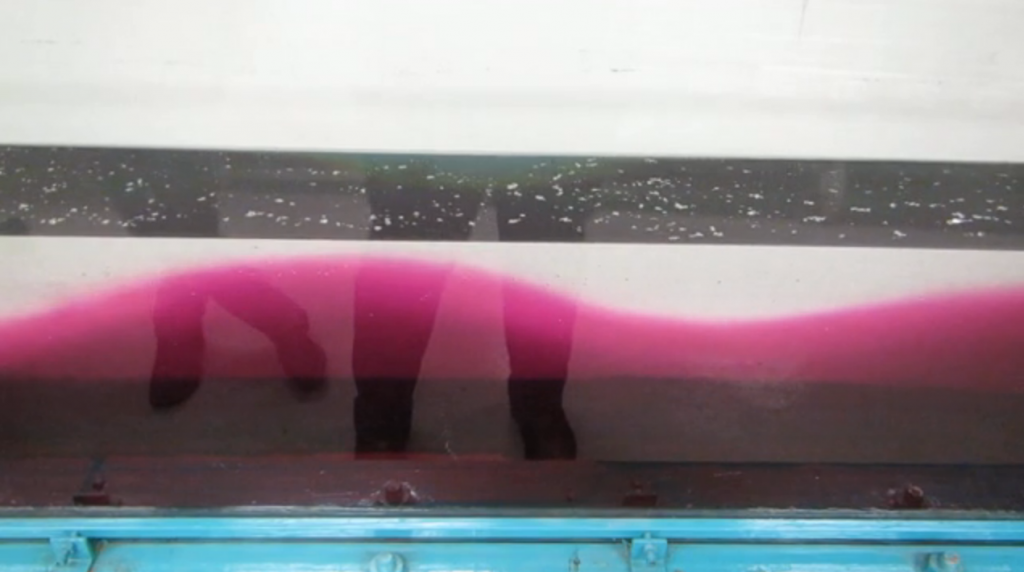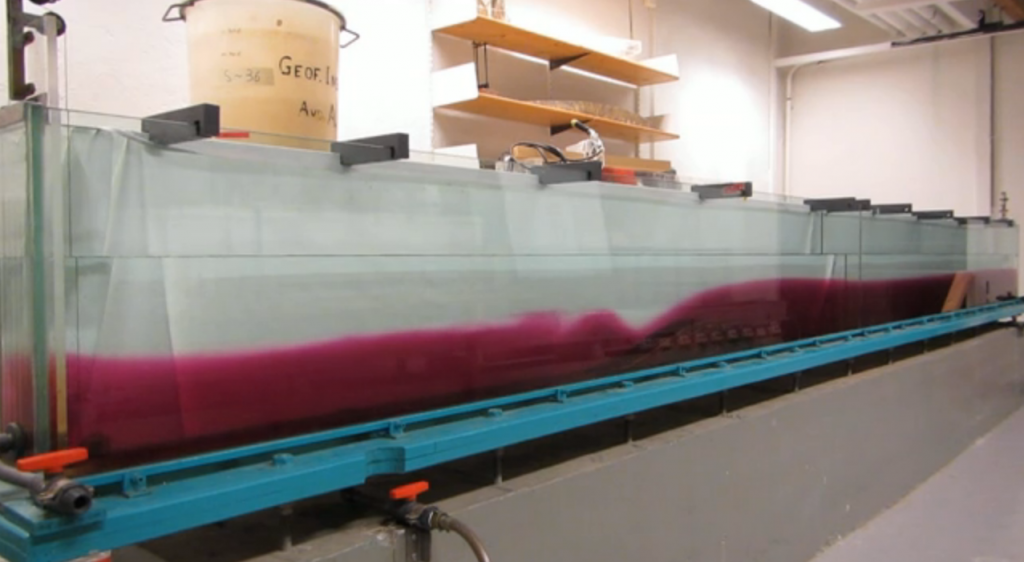A movie focusing on details of the lee waves in the tank.
In this post, we investigated lee waves in a tank in a general way. Here, I want to show a detail of those lee waves:
In this movie, the concept of hydraulic control becomes visible. On the upstream side of the mountain, the dense water layer forms a reservoir which is slightly higher than the mountain. On top of the mountain and towards its lee side, the layer of denser water is stretched thin and has a smooth surface until about half way down the mountain, where waves start to form. In this thin, smooth layer, flow speeds are higher than the wave speeds, hence disturbances of the interface are flushed downstream and cannot deform the interface. Only about halfway down the mountain, the phase speed becomes equal to the flow speed, hence waves can both form and stay locked in place relative to the mountain.
For more information on internal waves, check out these posts [which are scheduled to go online over the next couple of days]:

